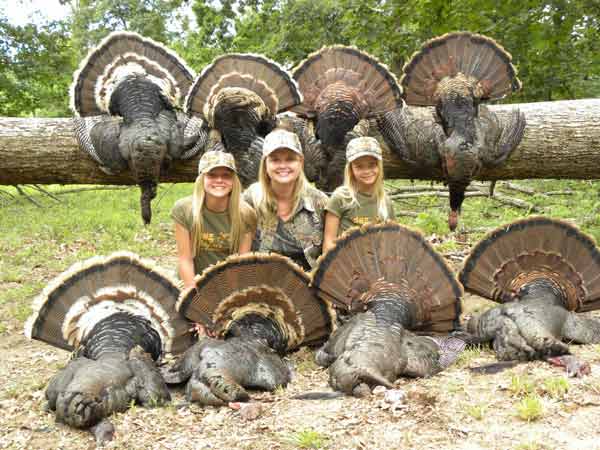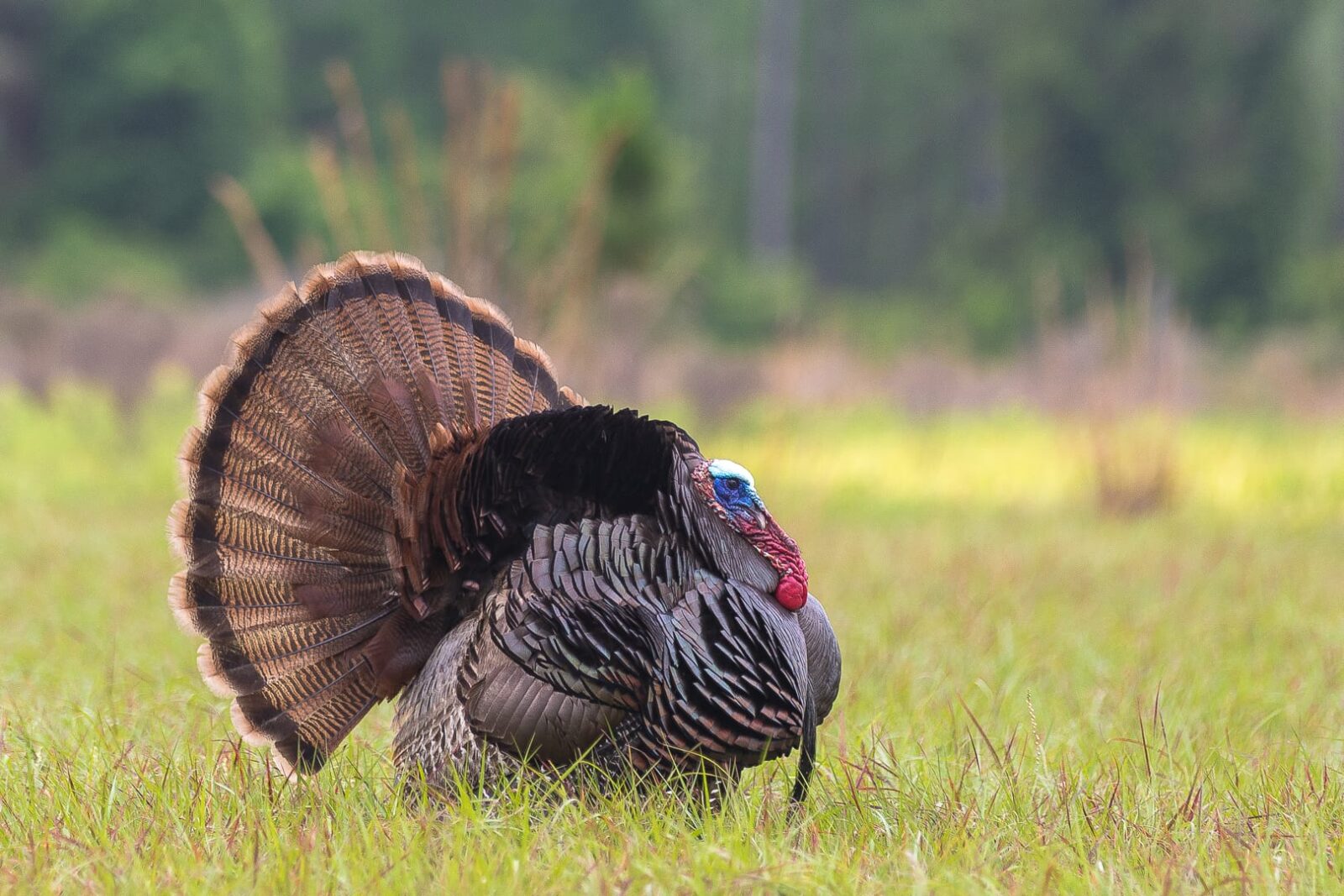Achieving the Pinnacle of Turkey Hunting The Turkey Grand Slam
For dedicated turkey hunters completing a Grand Slam represents the pinnacle of achievement in their sport. It requires patience skill, and determination to harvest each of the four wild turkey subspecies found in the United States. Here’s a closer look at what’s involved in attaining this prestigious milestone.
What is the Turkey Grand Slam?
The Turkey Grand Slam involves harvesting all four subspecies of wild turkey found in the United States:
- Eastern wild turkey
- Osceola wild turkey
- Rio Grande wild turkey
- Merriam’s wild turkey
To complete the slam, a hunter must successfully hunt and harvest one bird of each of these distinct subspecies. This demonstrates mastery of hunting skills across varied habitats and challenges.
The Grand Slam is considered the benchmark for accomplished turkey hunters. It showcases skills in scouting, calling, decoy setup, concealment, tracking, and more. Completing a Grand Slam demands dedicated planning, travel to diverse ecosystems, and the ability to adapt techniques for each subspecies.
Why is the Grand Slam So Prestigious?
A Grand Slam represents a monumental achievement for a few key reasons:
-
Multi-Season Commitment – It often takes hunters multiple seasons to complete all four birds. Each subspecies presents unique hunting conditions and difficulty.
-
Multi-Region Travel – The subspecies live in geographically diverse areas, requiring significant travel to hunt them all. Logistics and expenses add up.
-
Mastery of Skills – Adapting tactics for each subspecies tests a hunter’s expertise. Strategies that work on an Osceola in Florida may fail on a Rio Grande in Texas.
-
Distinct Challenges – From the wariness of Easterns to the elusiveness of Merriams in mountainous terrain, each turkey presents natural challenges.
-
Limited Opportunity – Securing limited tags and access for certain subspecies like the Osceola can be difficult. Competition is fierce.
In essence, a Grand Slam proves a hunter’s persistence, woodsmanship, adaptability, and well-rounded mastery of turkey hunting. For these reasons, it garners tremendous respect in the turkey hunting community.
The 4 Subspecies of the Turkey Grand Slam
Let’s take a closer look at the four turkeys that make up this prestigious undertaking:
Eastern Wild Turkey
- Largest of the four subspecies
- Found across Eastern U.S. from Maine to Florida up to South Dakota
- Wary and challenging to hunt due to hunting pressure
- Require mastery of calling techniques to close the distance
Osceola Wild Turkey
- Found only in Florida
- Smaller in size compared to other subspecies
- Limited hunting opportunities exist, mostly on private land
- Considered the most difficult subspecies to hunt
Rio Grande Wild Turkey
- Inhabits Texas, Oklahoma, Kansas, and other Southwestern states
- Prefers riparian areas along rivers and creeks for roosting
- Can be vocal and aggressively respond to calling
- Requires access to habitat like creek bottoms
Merriam’s Wild Turkey
- Found in Rocky Mountains and Western states like Wyoming and Montana
- Recognizable for white-tipped feathers
- Can be nomadic and cover large ranges in steep terrain
- Often found in areas with limited access and hunting pressure
How to Complete the Grand Slam
Here are some tips for achieving this prestigious hunting feat:
-
Start with research to map out potential hunts for each subspecies within your range. Use online scouting tools to explore habitat and pinpoint access.
-
Prioritize limited-opportunity birds like the Osceola early in your quest. These can take multiple seasons to successfully harvest.
-
Be ready to travel extensively. Plan multi-state hunting trips to intersect each turkey’s native range.
-
Adhere to each state’s seasonal regulations, license requirements, and tag allotments. Apply for limited draw tags when available.
-
Adapt your tactics thoughtfully for each subspecies and habitat. For example, a Rio Grande may be more decoy-receptive than a Merriam’s.
-
Leverage the local knowledge of guides and state wildlife agencies to better understand each turkey’s patterns and tendencies.
-
Remain persistent over multiple seasons. Setbacks and unsuccessful hunts are part of the journey.
-
Record your harvests officially with the National Wild Turkey Federation to have your Grand Slam verified and recognized.
-
Enjoy the journey! Harvesting four distinct, challenging birds is a monumental accomplishment.
Alternative Turkey Slams
For hunters who have achieved a traditional Grand Slam, other turkey slam variants up the ante:
-
Royal Slam – Grand Slam turkeys plus Gould’s wild turkey
-
World Slam – Royal Slam turkeys plus Ocellated wild turkey
-
Canadian Slam – Eastern and Merriam’s turkeys harvested in Canada
-
Mexican Slam – Rio Grande, Gould’s and Ocellated turkeys in Mexico
-
U.S. Super Slam – One wild turkey subspecies harvested in every U.S. state
These slams demand even more extensive travel, specialized hunts, and elevated mastery of the sport. Few hunters ever attain them in a lifetime.
Is the Turkey Grand Slam in Your Future?
Now you understand why the Turkey Grand Slam sits at the pinnacle of turkey hunting achievements. It proves dedication, skill, and a mastery of technique combined with travel and effort. For die-hard turkey hunters, it represents a lifelong dream quest.
As difficult as it may be, every remarkable hunting journey starts with a single step. Maybe your first step is scouting for Eastern birds not far from home. Or applying for a limited Osceola tag in Florida. Over time, those steps add up on the long road to an amazing achievement.
Will you someday add your name to the exclusive ranks of Turkey Grand Slammers? With preparation, persistence and passion, an epic turkey hunting journey awaits. Why not start yours today?

The Four Subspecies of Wild Turkey

The Osceola wild turkey is objectively the most difficult of the four subspecies to hunt, let alone harvest, due to a lack of public access opportunity and their extremely small habitat range. Osceolas only inhabit the southern half of Florida. Given this, many of the hunting opportunities in Florida occur on private land and in turn have fairly significant costs to them to hire an outfitter. That said, public land hunting opportunities for these birds exist, but are without question some of the hardest public land turkey hunts out there.
Osceolas are on average quite a bit smaller than the three other subspecies, but look similar to their Eastern cousins save for much darker wings. They are the most aggressive subspecies and often make for thrilling hunts.
The Eastern Turkey is the most populous and widest-ranging of the subspecies, found from Maine to North Florida to Louisiana, and all the way to Minnesota and beyond into Canada. On average, it’s the largest of the four subspecies. Easterns have the most thunderous gobbles, and are both the most wary and most hunted turkey. Tons of both public and private land opportunities exist to hunt an Eastern. Pick a state and get to researching as to what your ideal hunt would be using onX for Desktop.
Rios, as they’re known, inhabit the southern flyover states such as Texas, Kansas, and Oklahoma, as well as much of California. Rios are one of the easier subspecies to coax into shotgun range, but will no doubt provide challenges. Finding suitable habitat with hunting access can be challenging as these birds typically rely heavily on river/creek bottoms, one of the few places in these landscapes that harbor large trees suitable for roost locations. If you can find these creek bottoms with surrounding agriculture food sources, you will be on birds.
Merriam’s turkeys are the most differentiated of the subspecies with their creamy white-tipped feathers filled with hues of pink throughout their tail fan. From central Nebraska to South Dakota, and west throughout Wyoming and Montana, you will find these birds. Known for their frequent gobbles, as compared to all other subspecies, these birds are a ton of fun to hunt as you often are in the game on gobbling birds. They, of course, present their own challenges. Not being overly aggressive, they tend to be less committed to calling and often live in steep, varied, mountainous terrain. They can be very nomadic birds and can be downright difficult to catch up to.
Planning Your Turkey Grand Slam
The first question to answer would be: Are you looking to work on your Grand Slam over a number of years or do you want to achieve a Single Season Grand Slam? A Single Season Grand Slam is far more costly and logistically challenging, but offers a truly unique achievement. Hunting an Eastern, Merriam’s, and Rio Grande are all very achievable do-it-yourself hunts. Beyond using the onX Hunt App to plan your hunts, as an onX Elite Member you gain free access to Hunt Reminder, a service that will help you discover and ensure you never miss the opportunity to apply for turkey hunts across 33 different states. These include special draw wildlife management area hunts, states that require turkey applications to draw a tag, and other nuances that can be downright difficult to understand. The Osceola is the most difficult subspecies to harvest of the four simply due to the lack of available DIY opportunities. Not to say there are none. There are multiple tracts of public ground that can be hunted by anyone, every single year, but these will likely be the most challenging turkey hunts you will ever go on, so ensure it’s an experience you’re prepared for. The other, frankly more viable option, will be to hire an outfitter to complete this leg of the slam. If a slam is something you dream of accomplishing, start setting aside a few bucks every month and begin planning the numerous turkey trips it will take to get it done.
